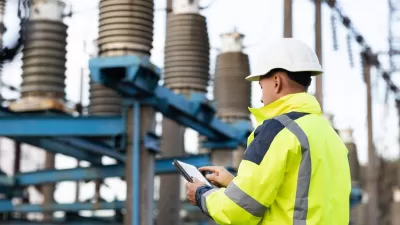Steve Lohr profiles New York University's Center for Urban Science and Progress, which is beginning to generate dividends in its study, and application of, smart city technology.
The Center for Urban Science and Progress "is part of a broader trend: the global drive to apply modern sensor, computing and data-sifting technologies to urban environments, in what has become known as 'smart city' technology," explains Lohr. "The goals are big gains in efficiency and quality of life by using digital technology to better manage traffic and curb the consumption of water and electricity, for example."
“'The Smart City movement,' according to a report this month from IDC, a technology research firm, 'is emerging and growing as a significant force of innovation and investment at all levels of government.' The N.Y.U. center’s partners include technology companies like I.B.M., Cisco Systems and Xerox, as well as universities and the New York City government."
This partnership has already proven fruitful for the City of New York, who've received assistance in tackling illegal conversions. Guided by data predictions from the N.Y.U. team, city building inspectors were able to increase their discovery of high-risk conditions from 13 percent of visits to 70 percent.
Next up for the team: noise, "[t]he largest single cause of complaints to New York’s 311 phone and online service."
FULL STORY: SimCity, for Real: Measuring an Untidy Metropolis

Alabama: Trump Terminates Settlements for Black Communities Harmed By Raw Sewage
Trump deemed the landmark civil rights agreement “illegal DEI and environmental justice policy.”

Planetizen Federal Action Tracker
A weekly monitor of how Trump’s orders and actions are impacting planners and planning in America.

The 120 Year Old Tiny Home Villages That Sheltered San Francisco’s Earthquake Refugees
More than a century ago, San Francisco mobilized to house thousands of residents displaced by the 1906 earthquake. Could their strategy offer a model for the present?

Indy Neighborhood Group Builds Temporary Multi-Use Path
Community members, aided in part by funding from the city, repurposed a vehicle lane to create a protected bike and pedestrian path for the summer season.

Congestion Pricing Drops Holland Tunnel Delays by 65 Percent
New York City’s contentious tolling program has yielded improved traffic and roughly $100 million in revenue for the MTA.

In Both Crashes and Crime, Public Transportation is Far Safer than Driving
Contrary to popular assumptions, public transportation has far lower crash and crime rates than automobile travel. For safer communities, improve and encourage transit travel.
Urban Design for Planners 1: Software Tools
This six-course series explores essential urban design concepts using open source software and equips planners with the tools they need to participate fully in the urban design process.
Planning for Universal Design
Learn the tools for implementing Universal Design in planning regulations.
Clanton & Associates, Inc.
Jessamine County Fiscal Court
Institute for Housing and Urban Development Studies (IHS)
City of Grandview
Harvard GSD Executive Education
Toledo-Lucas County Plan Commissions
Salt Lake City
NYU Wagner Graduate School of Public Service





























